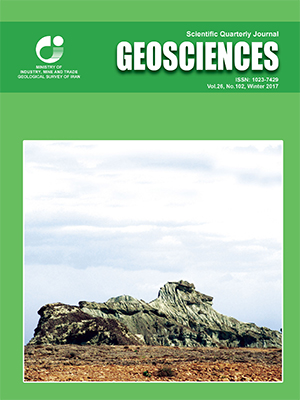Document Type : Original Research Paper
Authors
1 M.Sc., Department of Geology, University of Sistan and Baluchestan, Zahedan, Iran
2 Assistant Professor, Department of Geology, University of Sistan and Baluchestan, Zahedan, Iran
3 Ph.D., Department of Geology, University of Sistan and Baluchestan, Zahedan, Iran
Abstract
The Deh-Salm metamorphic complex, including the various types of metamorphic rocks and a north-south trending sequence of the index-mineral zones, crops out associated with the felsic plutonic rocks in the eastern margin of the Central Iranian micro-continent, between the Sistan suture zone and the Lut block. Amongst the metamorphic rocks, metapelite from different parts of the complex is the most widespread. Several evidence suggest the occurrence of a progressive regional metamorphism associated with the sequence of metamorphic index minerals from the west to the east. Metamorphism of the metapelitic rocks at the greenschist facies was initiated by the garnet zone, continued to the staurolite, andalusite and sillimanite zones, and terminated at the higher orthoclase-sillimanite zone in the condition of the amphibolite-granulite facies transition. The results from the thermometry calculations, based on the Fe-Mg ratio for biotite and garnet pair in equilibrium provide new temperatures; the western part of the complex underwent the greenschist facies with a temperature between 450 to 550°C and the eastern part experienced amphibolite-granulite transitional facies under a temperature up to 750°C. Metamorphic conditions inferred by the study of the pelitic rocks and correlated to the other adjacent rocks show an Abukoma-type progressive metamorphism. It may be considered that the late-Jurassic regional metamorphism event, synchronous with the Shah Kuh granitization at the eastern margin of the Lut Block was occurred due to the subduction of the Neotethys ocean.
Keywords

